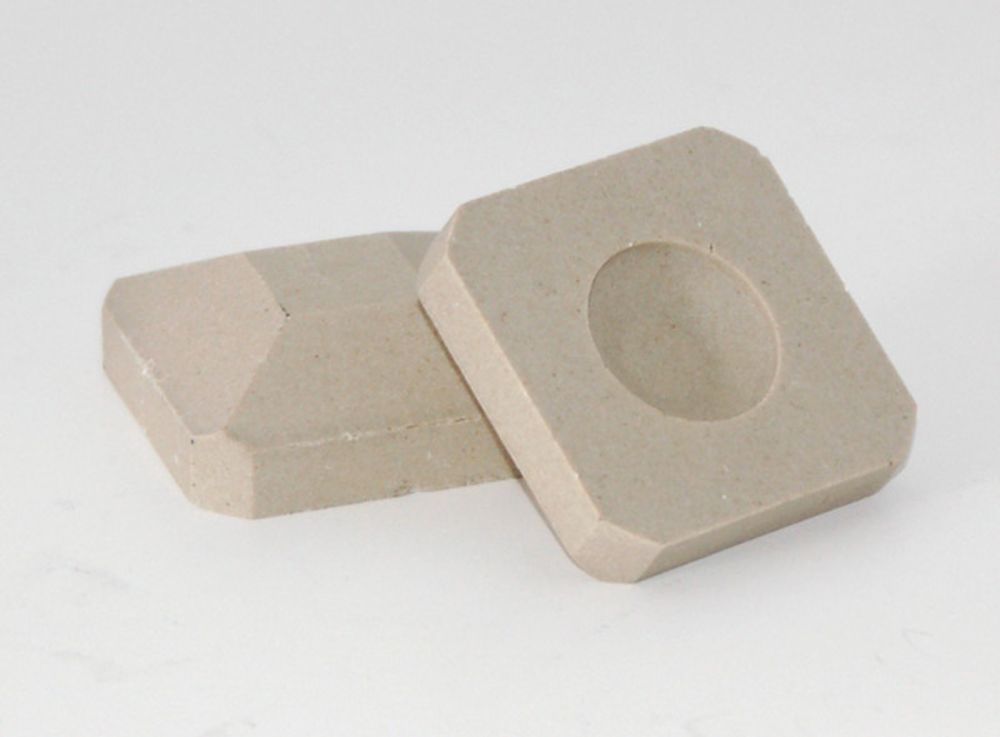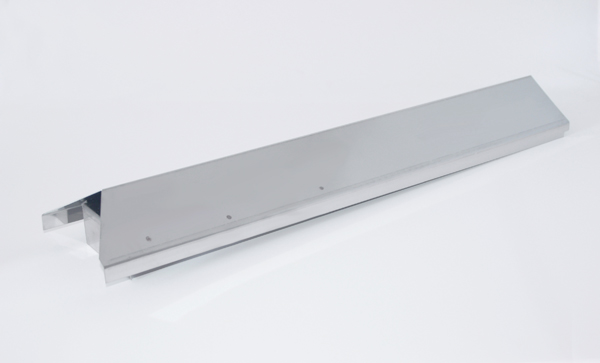Ceramic Briquettes vs Heat Shields: Which are Best for a Gas Grill?
Gas Grill 101: Should You Use Ceramic Briquettes or Heat Shields?
It’s a beautiful day, you have family and friends over, and it’s time to fire up the grill to cook up some tasty hamburgers, hot dogs, and veggies. But before you turn up the heat, it dawns on you: you forgot the charcoal.
As you excuse yourself from the party to go buy some charcoal, the grill master in your group stops you in your tracks. “You have a gas grill. You need ceramic briquettes, not charcoal!” After a lecture on the downsides of using charcoal, and even the hot spots created with heat shields, you’re almost convinced that ceramic barbeque briquettes are the way to go. But you still have a lot of questions.
Are ceramic briquettes really best for gas grills? How do they work? Are they going to ruin your grill? What about that less-than-desirable chemical taste?
Fortunately, in this guide, we’re covering everything you need to know about ceramic briquettes, how to take care of them, and how they measure up against another popular gas grill solution: heat shields.
People often ask us Which is better ceramic briquettes or heat shields? That is similar to asking Which is better between an automatic or stick-shift in your car. There are pros and cons to both as well as endless opinions.
But in our opinion, we choose ceramic briquettes all the way.
Heat disbursement is an integral function of the gas grill. It is necessary to carry the flames that come from the burner across your cooking surface in order to provide even heat and cooking.
Ceramic briquettes have been a popular choice amongst many grill grill brands for their heat dispersing system for decades. The briquette was introduced to replace the lava rock making it a cleaner and more heat retentive alternative. Some manufacturers moved from the lava grate system to the heat tent system as the lava rock would crumble and leave a mess in the grill. Charbroil was one of these manufactures who widely used lava rocks in their grills then moved to their version of the heat tent they dubbed a flame tamer. Other manufacturers found that to get the same vaporizing flavors from the lava they would need to find a cleaner, longer lasting alternative thus making way for the ceramic briquette.
What are Ceramic Briquettes?
Ceramic briquettes, as the name implies, are briquettes made out of ceramic that consume less fuel than other gas grill heating solutions. They come in a variety of sizes and styles; the most common styles are square, round, rectangular, pyramid-shaped, or flat. They can be purchased online or at most hardware stores.
When compared to heat shields, charcoal, lava rocks, and other options, ceramic briquettes are the clear winner. What makes ceramic briquettes for gas grills the best solution are their fuel-saving and heat-distributing benefits.
Even Heat Distribution With Ceramic Briquettes
Ceramic briquettes distribute heat evenly throughout your grill. This reduces the amount of energy it takes to keep your BBQ hot and ready for grilling. And since ceramic absorbs heat, the briquettes still radiate heat even when your grill is turned off.
This makes ceramic briquettes the chosen method to help evenly spread the flame across the grilling surface. They are great at retaining heat thereby using less fuel.
Your Food Tastes Better With Ceramic Briquettes
Ceramic briquettes are also great at flavoring your food. When the grease drippings sit on the ceramic briquettes and they are reheated by the grill, a delicious aroma adds flavor to your food. People swear that their food tastes better on a gas grill that uses ceramic briquettes.
Ceramic Briquettes are Easy to Clean
They are easy to clean too; simply take a brush and brush off the debris. We’ll go over the proper care and cleaning of your ceramic briquettes in a later part of this guide.
Ceramic Briquettes are Long Lasting
Ceramic briquettes are longer lasting than heat shields or lava rocks. It may take 5 years before our briquettes ever need to be replaced. They are self-cleaning, but you can make them last longer by brushing off excess debris.
Ceramic Briquettes are long lasting in comparison to heat shields or lava rock. They also are the closest replacement to cooking with charcoal to give added flavor without the use of chemicals that are found in the charcoal and lighter fluid. They come in different shapes and sizes as well some are square, round or rectangular and some have pyramid shaped tops while other are flat. No matter the shape or size, they are still the superior solution to heat disbursement and retention.
Ceramic Briquettes are Environmentally Friendly
Ceramic briquettes are a good investment for anyone who likes to grill and is concerned about the environment. They stay hotter longer, even after the grill is turned off, saving you on fuel and energy. They also have a longer lifetime, which means you don’t have to replace them as often.
Ceramic Briquettes vs Other Heat Diffusers
Ceramic briquettes have been a popular choice amongst many grill brands for their heat-dispersing qualities for decades.
Ceramic Briquettes vs Lava Rock
The ceramic briquette was introduced to replace the lava rock as a cleaner, more heat-retentive alternative. Some manufacturers moved from the lava grate system because the lava rock would crumble and leave a mess in the grill. Other manufacturers found that to get the same vaporizing flavors from the lava they would need to find a cleaner, longer lasting alternative, thus making way for the ceramic briquette.
Ceramic Briquettes vs Heat Shields
Heat shields, heat plates, flame tamers, flavorizer bars, flavor grids, and vaporizing panels, etc. are all types of heat angles, or metal tents that sit above the grill’s burner. They provide the same heat- dispersing features as ceramic briquettes, but they do not have the same heat retention as ceramic briquettes. Metal is not the best conductor of heat. Steel (which most heat shields are made of) has a thermal conductivity score of 17. Metal heat shields often are the first part to corrode in a gas grill and have to be replaced somewhat frequently (depending on how often you grill). They do not have the long-lasting ability of briquettes.
These heat shields often are the first part to corrode in a gas grill and have to be replaced somewhat frequently (depending on how often you grill). They do not have the long lasting ability of ceramic briquettes. In fact, leaving grease drippings on these shields to flavor your food will cause them more damage as well. These are the most popular replaced part in the grill. Over time, the heat from the grill, coupled with grease drippings sitting on the heat shield, will quickly rust out and begin to fall apart. The biggest claim to fame with heat tents was the theory that by having an angled design over the burner you would reduce flare ups by having the grease drip away from the burners. In order to extend the life of your heat tents, you should periodically clean them with a degreaser and either a brillo pad or a brass bristle brush.
In summary, ceramic briquettes provide the same flame dispersing benefits of heat shields, but with a longer lifetime and better flavor-saving properties.
Can You Convert Your Grill from Heat Shields to Briquettes?
“Ok, I’m sold. Can I convert my grill from using heat plates?”
Yes! It’s definitely possible to replace your metal heat plates with a rock grate and use ceramic briquettes.
First, simply measure the ledges (front to back) in your grill where your current heat tents sit. Then, measure from left to right. Save these measurements and then follow the steps below to fully convert your gas grill over to ceramic briquettes.
After you have your dimension, the most important one to look for when searching for a briquette tray (or rock grate) is the front to back. Then look for the briquette tray or rock grate that closely matches your left to right (overall) dimension. Remember, with a rock grate you can cut down the left to right measurement if you find the perfect front to back. You cannot do this with briquette trays. So, if there is space left over, center the trays leaving the open space on the left and right.
Heat angles are easy to install as you just place them evenly across a rock grate or in the slots of your briquette tray, whichever your grill comes with. They are now also being sold in varying flavors such as hickory or mesquite. Ceramic briquettes only need to be replaced if they begin to crumble (which takes years) or they crack or break.
If your grill traditionally uses lava rock, you can absolutely begin using ceramic briquettes. The lava rock becomes very brittle and crumbles potentially clogging your burner holes while leaving a mess at the bottom of your firebox. Due to the irregularity of the shapes of the lava rock, they do not distribute the heat as evenly as the consistent shape of the briquettes.
Many imported grills have changed the face of the gas grill industry by predominantly using these metal plates in their grills. This is a lower cost design as many heat tents are thin metal.
How to Clean Your Ceramic Briquettes
Ceramic briquettes are a favorite of grill masters everywhere because they are long-lasting and easy to clean.
When it comes to cleaning ceramic briquettes for your gas grill, simply use a scrub brush and wipe the briquettes of debris while they are cold. We recommend turning them after every cooking session so that the debris will naturally fall off. Soaking them in vinegar is also a popular way to clean them off.
When to Replace Ceramic Briquettes
Your ceramic briquettes should be replaced when you notice the ceramic starting to crumble. First, give them a good clean just to be sure (you don’t want good briquettes to go to waste!). If the ceramic briquettes are still breaking apart or the residue isn’t coming off, it’s time to replace them.
When looking for a new grill, make sure that one of the features is some sort of ceramic heat disbursement system. This will give you all the benefits of ceramic heating without the downsides of other diffusers.
Some high-quality grill manufacturers that use the features listed above include MHP, Alfresco, Artisan, Lynx, Twin Eagles, Delta Heat, DELSOL, and Broilmaster. Even Kamado cookers, like the Big Green Egg, are made of ceramic.
Got questions?
Remember we are always here to help! Feel free to give us call at 877-983-0451.




